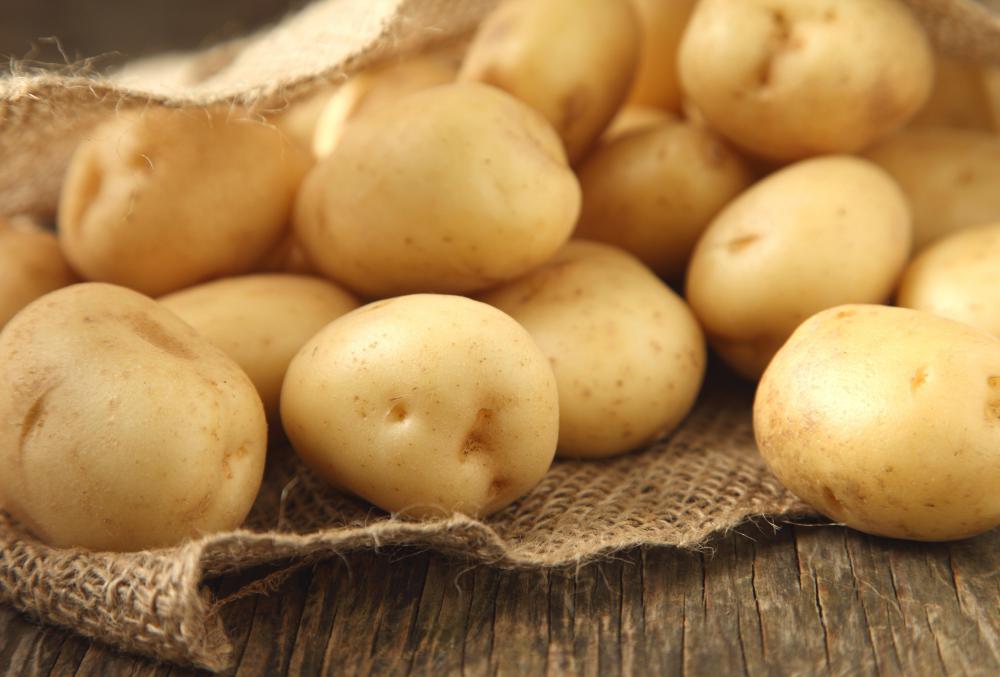At TheHealthBoard, we're committed to delivering accurate, trustworthy information. Our expert-authored content is rigorously fact-checked and sourced from credible authorities. Discover how we uphold the highest standards in providing you with reliable knowledge.
What Is Glucoamylase?
Glucoamylase is an enzyme that can be obtained from the yeast S. diastaticus or fungi in the Aspergillus genus such as Aspergillus niger. The enzyme decomposes starch molecules in the human body into the useful energy compound of glucose. This is accomplished by removing the alpha-1 and 4-glycosidic linkages from the non-reducing end of the starch molecule. These molecules are more commonly referred to as polysaccharides and are frequently either amylase- or amylopectin-based. The purpose of glucoamylase in commercial food activities is centered around the brewing of beer and the production of bread products and fruit juices.
Since starches are relatively large carbohydrates, when glucoamylase acts on them, it also releases maltose as well as glucose. While maltose, C12H22O11 H2O, is not as simple of a sugar as glucose, C6H12O6, and, therefore, not as quickly broken down by the body for energy use, it is an important compound in the food industry. Maltose is used as a nutrient additive in many types of foods from pastries to breads. Glucoamylase is also used in the food industry to manufacture sweeteners such as glucose and fructose syrups.

The function of glucoamylase in the body also aids in the easing of several illnesses. It is known to reduce the effects of irritable bowel syndrome (IBS) by improving digestion, to treat gastrointestinal problems in general, and to minimize the inflammation that is often a side effect of autoimmune diseases. Research has also shown that it also helps to bring blood sugar to a normal level within the body and to reduce incidences of food allergies.

Starches are a large component of many foods such as vegetables and grains, and glucoamylase is an important enzyme that makes this otherwise-indigestible vegetable matter an important component of human nutrition. Taken as a supplement, vegetarians prefer glucoamylase that is sourced from the Aspergillus fungi, as it is a non-genetically modified source that is both animal byproduct- and gluten-free. Commercially-prepared versions of the enzyme are also usually derived from Aspergillus, and can be stored as a dry, brown powder with a shelf life of approximately one year.

Though glucoamylase supplements and commercial preparations are widely manufactured, the human body also generates its own quantities of the compound. It is present in human saliva and acts on starchy foods like potatoes and rice before they are even swallowed. This is what results in high-starch foods having a sweet taste in the mouth, as glucoamylase is breaking glucose off of the end of the carbohydrate chains while the food is chewed. If there is a deficiency of glucoamylase in the body, inflammation can occur, as well as allergic and asthmatic incidences.
AS FEATURED ON:
AS FEATURED ON:














Discuss this Article
Post your comments